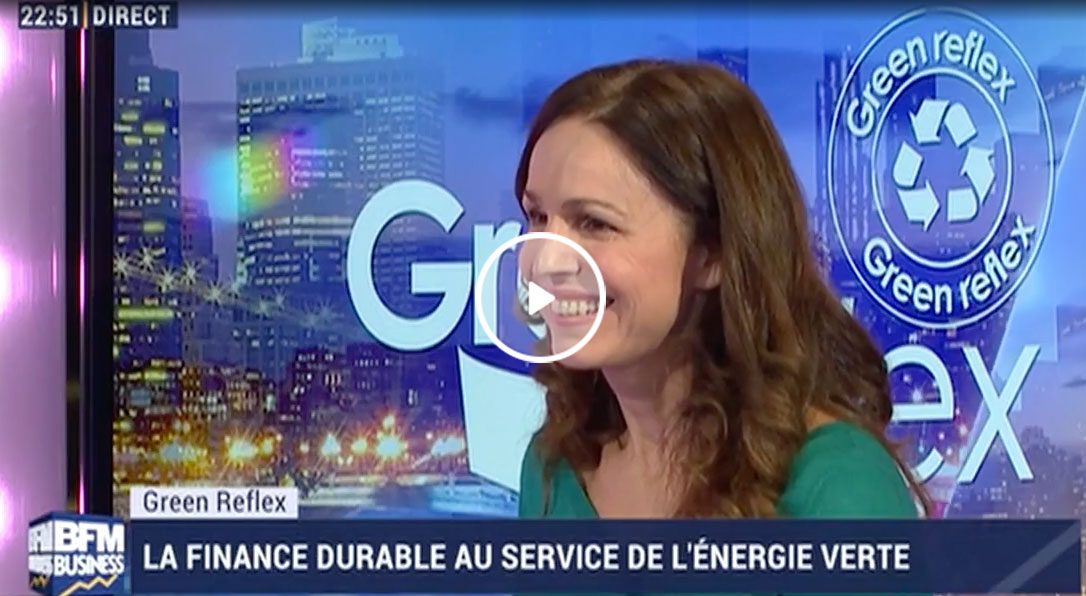Our challenge is to accelerate the flow of capital from investors to companies that are transforming and acting for change
BNP Paribas and BFM have teamed up to explore the impact of the energy transition in a new collaborative series Green Reflex, a new broadcast featured on BFM Business. Constance Chalchat, Head of Change Management at Corporate and Institutional Banking, offers her thoughts on the challenge, the opportunity, and what sustainability means for companies like BNP Paribas.

Interview with BFM (in French)
Key takeaways
What is sustainable finance?
Sustainable finance bridges the gap between those who want to invest responsibly and companies that care about environment, social and responsible governance. BNP Paribas offers institutional clients the opportunity to invest in responsible solutions, while helping corporates to finance more sustainable and equitable growth through decarbonisation, recycling and reforestation, etc. Sustainable finance is about putting the resources of the financial industry at the service of long-term sustainable growth for all.What concrete examples of sustainable finance and investment can you offer?
We can provide three examples: first, we set up the first sustainable loan with Belgian Post, in which the terms are tied to their environmental and social performance. To monitor this, an extra-financial ratings agency follows the company’s commitments to ensure they comply with the conditions set by the loan.Second, we launched a financing programme with a sports equipment supplier that rewards their clients for compliance to the social and environmental expectations as set by an independent standard. BNP Paribas in turn applies differentiated rates to these clients based on their ranked performance.
Third, we’ve developed, in partnership with the World Bank, investments that help support the UN’s Sustainable Development Goals programme. The placement is distributed by many banking networks and allows retail investors to align their investment interests with their social interests and to have a positive impact on the sustainable economy. In both cases, the role of BNP Paribas is to encourage our clients to go in the right direction.
Why is this important for BNP Paribas? Is there pressure from the shareholders?
For a bank of its size, BNP Paribas has a responsibility to set the pace for the rest of the industry and work to build a sustainable future. This is, however, a challenge that extends beyond the banking world. That’s why last month we organised the second BNP Paribas Sustainable Future Forum with the goal of bringing together our corporate clients and investors with members of the public sector to share our sustainable finance needs and goals. The event confirmed the challenges we face as an industry to accelerate the flow of capital from investors to companies that are transforming and acting for change.What direct action is BNP Paribas taking to finance the fight against global warming?
BNP Paribas aims to be the bank of the energy transition. We have significantly reduced our own environmental footprint with the goal of being carbon neutral by the end of the year. BNP Paribas has dedicated nearly €135 billion in loans to date, which contribute directly to the achievement of the UN’s Sustainable Development Goals.From €9.3 billion of outstanding renewable energy loans in 2016 to a target of €15 billion by 2020, we are financing or have advised projects totalling more than 7.6 GW of installed capacity. The Group has also confirmed its position as a leading bank for financing offshore wind energy in Europe, and is one of the top three global players in the field of green bonds. Finally, by 2020, €100 million will be spent on innovative start-ups aimed at helping accelerate the energy transition.
Meanwhile, responsible asset management becomes a criterion to stay competitive. The companies in which we invest develop innovative solutions to face major social and environmental issues. BNP Paribas Asset Management represents €230 billion in outstanding assets incorporating ESG criteria and €30 billion in SRI assets.
